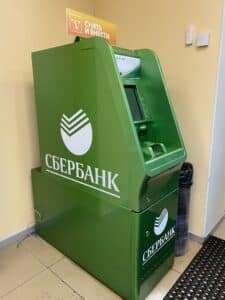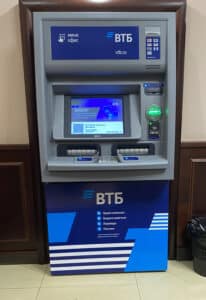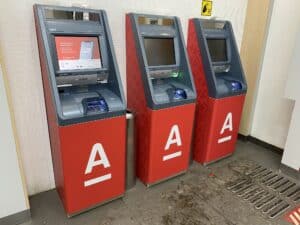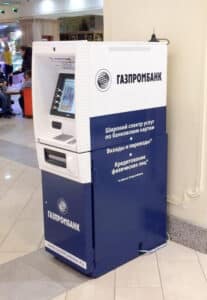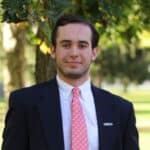Many traveler’s handbooks, in the 1990s and even into the 2000s, warned foreigners to be wary of ATMs in Russia. A lot has changed since then in the Russian banking sector and in Russia in general.
The following resource details the histories of some of Russia’s largest domestic banks, with ATMs spread across the country. Foreign banks such as Citibank and Raiffeisen also have presence in Russia, but the market is dominated by these strong domestic brands that are now commonly used and trusted by locals.
A Brief History of Post-Soviet Banking in Russia
By Josh Wilson
In the 1990s, private banking exploded onto the newly post-soviet Russian market. The sector rapidly moved from one of a few institutions entirely under state control to a highly fractured market of hundreds of privately held banks.
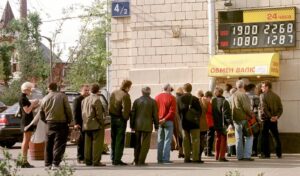
High rates of inflation led to long lines at exchange points to buy dollars. Russian banks also made fortunes by converting ruble deposits to dollars and converting them back later to cover withdrawals.
Growth was further fueled by the immense profitability of banks at the time. Banks would exchange deposited rubles to dollars, which, thanks to hyperinflation, could then be used to buy many more rubles by the time the deposits were withdrawn. Many banks were also strongly connected to individual businessmen who used them to make loans to their own enterprises, a risky model that is against regulations in most countries. This led to banking instability and a general distrust of banks by the population. Many Russians famously preferred to keep their savings at home in dollars or euros.
To rectify this situation, and allow Russia’s banking sector to work toward the overall growth of Russia’s economy, Russia’s Central Bank has worked aggressively to boost regulations, enforce them, and close weaker banks. This has been particularly true under the leadership of Central Bank Head Elvira Nabulina after 2013. Today, the Russian banking market has become increasingly consolidated, with just 20 banks collectively accounting for 98.2% of the market in mid-2021.
The result has been an increasingly stable sector which has been winning back the trust of individual Russian citizens. Further, increased profitability with still-fierce competition has led to the banking sector offering increasingly customer-friendly and modern services, online banking apps, and now even retail investment services that are only now starting to gain in popularity in Russia.
SberBank
By Rachel Rodriguez
SberBank, (СберБанк) which was created in Tsarist times and was the USSR’s official state bank, is still Russia’s largest retail bank and Russia’s largest bank by assets, which today total nearly $500 billion. It serves about 100 million individual clients and 2.8 million corporate clients worldwide. Its branches, ATMs, and branding are everywhere in Russia, particularly now that it is striving to also become one of Russia’s largest tech and lifestyle companies.
SberBank is present in 83 of Russia’s 89 constituent geographic regions. Overall within Russia, there are 14,200 branches and approximately 55,000 ATMs. SberBank accounts for approximately a third of all Russia’s banking activities, primarily in retail banking, but also in corporate banking and investment banking.
SberBank also has a presence in 18 countries with international business accounting for 5% of its revenue, and approximately 3 million of its customers. You are very likely to see its brand in former Soviet states, in Eastern Europe, and even in India, China, and Germany. There, SberBank most often expands by buying, rebranding, and expanding smaller existing banks.
The history of SberBank dates back to 1841 when Tsar Nikolai I ordered “savings bank branches” to be created in an effort to modernize Russia’s banking system and allow access to banking services to a wider swath of the population. By 1895, the system had expanded to 3,875 branches, worth a total of 368 million rubles, an enormous sum for the time. By 1963, nearly every Soviet citizen had a SberBank account as the USSR used them to manage payments.
After the fall of the USSR, SberBank, as a former Soviet state institution, was preserved in Russia, forming a new commercial entity there in 1991, and absorbed into other national structures in the USSR’s other republics.
In 2007 Herman Gref, a former economic advisor to President Putin and widely considered one of the main architects of Russia’s post-Soviet economic policy and structure, became the Chairman of the Executive Board of SberBank. With the new leadership, Sberbank reformed itself from a lumbering Soviet holdover to a modern, efficient, and highly profitable bank.
On the basis of these profits, SberBank is expanding into numerous industries and creating a virtual “ecosystem” of services, many of which it has launched and branded on its own and some it promotes through partnerships. People can buy groceries with SberMarket, monitor their health with SberHealth, and even buy a car with SberAuto. SberBank can be seen in nearly every aspect of modern life in Russia today.
SberBank is majority owned by the Russian state and has found itself under US sanctions which prevent large institutions from buying the bank’s debts. However, US sanctions do not apply to travelers using the giant’s ATMs and other services, which accept cards with the Visa or MasterCard logo.
VTB Bank
By Harrison Murray
During October of 1990, while the USSR was still standing, the main office of VTB Bank (Банк ВТБ) was established not far from the Kremlin. Created with the support of the Ministry of Finance and the State Bank of the USSR, the new bank’s purpose was to aid the nation’s integration into the global economy and conduct its foreign economic transactions. In December of the following year, VTB was additionally issued general banking license, giving it the ability to conduct any type of banking activity in both Russian Rubles and foreign currencies. In 1997 the bank was transformed into an open joint stock company, with the Russian Central Bank holding a 96.8 percent stake in the company. This would later grow to 99.9 percent as VTB grew its charter capital from Central Bank funds.
In 2002, the Central Bank’s shares were bought out by the Russia’s Federal Agency for State Property Management. Under a new team of managers, led by current bank President Andrey Kostin, VTB sought to become Russia’s leading banking institution across all services, with greater focus in retail and investment banking. In 2004, VTB began to acquire smaller banks, rebranding them VTB24, and growing a large retail bank network.
In 2007, VTB became the first Russian bank to hold an initial public offering. Russian and foreign investors poured 8 billion US dollars into the enterprise. This transition also meant that VTB was the first Russian bank to make its accounting public. At a time when the Russian banking sector was still flooded with shady banks, Standard and Poor declared VTB “the most transparent bank in Russia.”
VTB is now based in St. Petersburg and operates 1,700 branches and 18,000 ATMs across Russia, serving 14 million clients. Domestically, they control 17 percent of corporate lending and 18 percent for retail loans. VTB is strong internationally as well, with 82 thousand employees spread across 18 different countries including India, China, many former Soviet states, and African countries.
VTB’s visibility on the Russian market is also widened by its extensive social responsibility and sponsorship portfolio, which include the Dynamo sports teams and VTB Stadium in Moscow and support for the Bolshoi and Mariinsky Theaters, the Tretyakov and Hermitage Museums, and the Jewish Museum and Tolerance Center.
According to their first quarter financial statements for 2021, VTB currently holds 18,588.4 billion rubles in assets (about 255 billion US dollars at current exchange rates), approximately 66 percent of which are held in loans and advances to customers. Like many financial institutions, VTB had a down year in 2020, with VTB Group declaring profits more than halved from the previous year. However, they also seem to be rebounding quickly, with the VTB24 showing more profit for the first quarter of 2021 to be greater than that for all of 2020.
VTB, as a state-controlled bank, is currently targeted by US sanctions. However, it also still enjoys international investment and its wide network of ATMs and card acceptance machines at retailers across the globe still process US cards from within the global credit network.
Otkritie Bank
By Harrison Murray
Like many Russian banks, the entities that would eventually come together to create Otkritie Bank (Банк Открытие) were born in Moscow during the 1990’s. The Otkritie name was established in 1995 by Vadim Belyaev, and originally operated as a retail stock brokerage on the Moscow exchange. Otkritie expanded throughout the 2000’s, growing to include banking, insurance, and asset management services. This expansion was anchored by two major milestones for the company. First was the opening of their London office in 2007, positioning them to become a leader in the international trading of Russian securities. The second was the acquisition of the Russian Development Bank, which they rebranded as “Otkritie Bank” in 2008.
Otkritie acquired Nomos Bank in 2012, adding to their coverage of Russia’s regions. In 2005 Nomos had bought Regionbank, a leader in the eastern Russian markets, and, in 2010, had become a controlling share owner in the Khanty-Mansiysk Banking Group, which had a large customer base in western Siberia. Nomos itself had had heavy ties to the hydrocarbon and metals industries.
Otkritie then worked on rapidly expanding its branches to almost every Russian region and growing its lending portfolio. However, it eventually became clear that the bank had overextended itself, and its cash reserves had fallen low. Russia’s domestic credit rating agency in a 2017 review downgraded the bank to a BBB-rating, one level below that required for banks to hold funds from state owned corporate entities and private pension funds. With those in jeopardy, and at a time when Russia’s Central Bank was aggressively cleaning up Russia’s banking sector and regularly pulling licenses from under-capitalized banks, Otkritie’s retail and corporate customers panicked and began a run on Otkritie, creating a downward spiral that further endangered the bank.
The Central Bank, however, decided that Otkritie had grown to become systemically important to Russia’s banking environment and rather than shut it down, nationalized it, injecting billions in new funds and assuming control of the bank.
Today, Otkritie is considered to be back in good health and is rated among Russia’s 10 largest banks. The Central Bank still owns all of Otkritie’s shares today, but plans to sell them publicly in 2022 to return the bank to private ownership. State firms and former owners will be barred from purchasing any stock in the company.
Otkritie now operates 521 offices in 73 regions of Russia, as well 33,000 ATMs between the bank and its partners. They finished 2020 with about 3.5 trillion rubles in assets, which was up by just more than 200 billion from the year before. Otkritie also owns still owns other financial companies, such as the Rosgosstrakh insurance company, Baltic Leasing, and Tochka, a bank designed for entrepreneurs.
In terms of marketing and their public image, Otkritie’s investments link them heavily to football. The Otkritie Arena, home of Moscow’s Spartak Football team, served as one of the venues for the 2018 World Cup and has hosted numerous concerts for western stars such as Green Day, Ed Sheeran, and Guns N’ Roses. Otkritie also ran advertising campaigns featuring Cristiano Ronaldo, further linking them to football.
Due to the Central Bank’s ownership of Otkritie, the bank is essentially untouchable inside Russia, but has also fallen under the umbrella of US sanctions. This is not a concern for travelers hoping to use the ATMs or other standard Otkritie banking services in Russia, however, as the sanctions are focused on preventing large financial intisuttions from buyin Otkritie debt. They do not prevent private citizens from simply withdrawing money from a particular ATM.
Alfa Bank
By Harrison Murray
Established in December of 1990, Alfa Banking Group (Альфа-Банк) is one of the largest private banking institutions in Russia. Headquartered in Moscow, they operate 793 offices around the world, serve over seven million retail clients, and maintain accounts with more than 600,000 corporate clients and has assets totaling over $61 billion US dollars.
Alfa Bank won the overall 2019 title of Bank of the Year according to The Banker, a London-based industry magazine, which cited Alfa’s advancements in online banking. Alfa continued to advance their digital services in 2020, winning awards for their banking app and being crowned a “Digital Leader” by the Digital Leaders Forum in Sochi.
Alfa Group, which owns Alfa Bank, is known for its investing prowess. They have significant ownership in the X5 Retail Group, which has grown to be Russia’s market leader in retail food. They also have a majority stake in IDS Borjomi International, an iconic bottler of spring water from central Georgia that is extremely popular in the region.
Some of the group’s other investments have been more controversial. In 2003, Alfa Group merged its oil and gas holdings with BP, to form TNK-BP. This 50/50 merger fell apart in 2008 due to disputes between the two sides. It has also had a less-than-stellar record as a polluter in Siberia, but has pledged significant funding to environmental cleanup.
Alfa’s investments in VimpelCom also resulted in a long-term power struggle with fellow investor Telenor. In 2009, after a number of lawsuits, Alfa and Telenor agreed to create a holding company for VimpelCom that would be based in Amsterdam and publicly tradeable, assuring a more even balance of power and largely ending the dispute.
A demanding investor, Alfa Group also operates multiple charities, including the scholarships Alfa-Chance (for Russians) and Alfa Fellowships (open internationally) and Life Line, which helps children with severe illnesses. They also invest in the arts, funding stipends through the Moscow Literary Fund and sponsoring concerts and museums.
Alfa Bank has also been active in developing an “ecosystem” of services. This includes Alfa Travel and AlfaPay, a payment technology that uses specialized wristwatches with PayPass technology.
As a privately owned bank, Alfa Bank not currently affected by US sanctions. Their ATMs accept all Visa and MasterCard branded cards.
Tinkoff Bank
By Lee Sullivan
Tinkoff Bank (Тинькофф) was founded in 2006 by Oleg Tinkov, a well-known Russian entrepreneur as Russia’s first entirely online bank. It achieved early and steady success, raising 1.1 billion dollars and being named Russia’s Bank of the Year in 2013 and 2021. Following Sberbank’s lead, Tinkoff grew quickly, to host a complex ecosystem of lifestyle services on its app (ranked 4.9 on Apple and 4.7 on Google Play) and website, the two main points at which its clients interact with it.
Tinkoff bank gained almost 10 million customers between 2016 and 2020 and its self-proclaimed 2023 strategic objective is to, “Grow our customer base profitably by building the most comprehensive, engaging, and innovative, financial and lifestyle ecosystem in the world.” The bank has also invested aggressively in ads and telemarketing in recent years.
Tinkoff is also working towards other goals, such as sustainability goals as laid out in a 2020 report, which outlines promoting responsible finance through inclusion, championing ethical business and environmentally friendly operations, and empowering all of its people as the foundation of its sustainable ecosystem.
At the end of the third quarter in 2021, the bank’s parent company had 1.1 trillion rubles in total assets. That number marks a 13.9% growth from the previous quarter and a 51.4% growth from the previous year. The asset structure is balanced between loans and highly liquid investments and cash. Net loans account for the largest portion of assets at 556 million rubles, while cash and cash equivalents account for 193 million rubles. The company claims that large asset liquidity will enable it to capture future growth opportunities.
In addition to its app and website, Tinkoff has a rapidly growing network of ATMs across Russia, currently numbering about 1500. They feature 4K resolution touchscreens and designs by Art Lebedev, one of Russia’s premier design agencies.
Customers are also served through cloud-based call centers. Also, over 25,000 cities and towns are covered by the Tinkoff smart courier network that guarantees next day delivery for Tinkoff bank cards and other materials.
Tinkoff banks ranks second in the credit card market, with approximately 15% of the market share and growing.
Gazprombank
By Max Weber
Gazprombank (Газпромбанк) currently stands as one of Russia’s three largest banks and the third largest bank in Central and Eastern Europe. With a customer base of nearly five million individuals and sixty thousand legal entities ranging from nuclear energy to metalworking, agriculture, retail, and more, the bank provides its clients with a wide scope of banking and investment products.
Gazprombank, headquartered in Moscow, operates across Russia as well as in Cyprus, Hong Kong, Kazakhstan, China, Mongolia, and India. It has also historically held and traded major stakes in the banks of other countries, including Venezuela.
Gazprombank was founded in 1990 by Gazprom, a state-run gas producer, to serve the gas industry. While the Russian government continues to maintain a plurality share in Gazprom, ownership of Gazprombank is currently split between various Gazprom-connected entities.
In 2007, Gazprom transferred control of Gazprombank to Gazfond, the oil giant’s non-state (corporate) pension fund. Although founded by Gazprom, the fund has been externally managed since the early 2000s. Gazfond is currently managed by Lider Asset Management, Russia’s largest domestic asset management company. However, Gazfond itself currently holds a 45% stake in Lider.
Gazprombank is a joint stock company publicly traded on the Moscow Stock Exchange. Major investors include Gazfond (which owns 40%), Gazprom (~28%), and Gazprom capital (~22%), while the remaining shares are split among Gazprombank’s management and various state entities.
With strong ties to high profile Russian domestic corporations, Gazprombank has been sanctioned by the US Treasury several times. This includes direct sanctions in response to the 2014 Russo-Ukrainian conflict, for instance. Additionally, in 2019, Gazprombank was forced to cut financial ties with Evrofinance Mosnarbank, a Moscow-based binational bank of which it owned a 25% stake, after the US sanctioned Evrofinance for its support of Petroleos de Venezuela S.A., a US-sanctioned Venezuelan state-owned gas company. These sanctions, however, do not affect anyone using Gazprombank ATMs or payment terminals.
Despite both U.S. sanctions and negative economic pressures generated by the COVID-19 pandemic, Gazprombank has maintained strong financial performance. Its annual net income in 2020, for instance, surpassed that of the previous, pre-pandemic fiscal year, rising 27.7% from RUB 44.6 bn (USD 549.5 m) to 56.0 bn (746.4 m). This increase was, moreover, double that of its net income growth from 2018 to 2019 (~13%). Furthermore, while full information for the 2021 fiscal year has yet to be released, the bank’s 2021 third-quarter report demonstrates even stronger growth, with net profit surging 327.3% and total assets rising 8.1% from the previous year’s total performance.
You Might Also Like

Artificial Intelligence in Russia
Artificial intelligence has been rising in practical uses for the past several decades. From smart devices to automated weapons, it has changed the way humans…
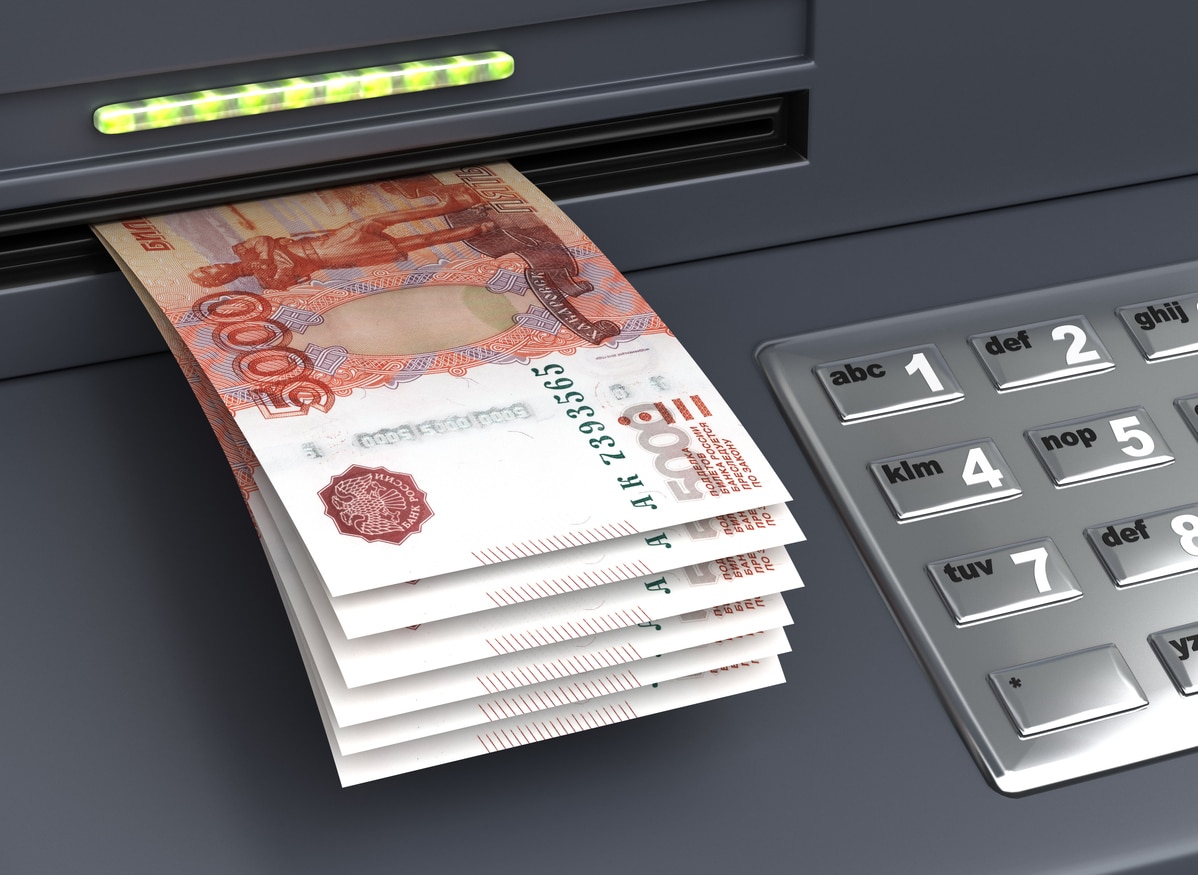
A Traveler’s Guide to Russian Banks
Many traveler’s handbooks, in the 1990s and even into the 2000s, warned foreigners to be wary of ATMs in Russia. A lot has changed since…
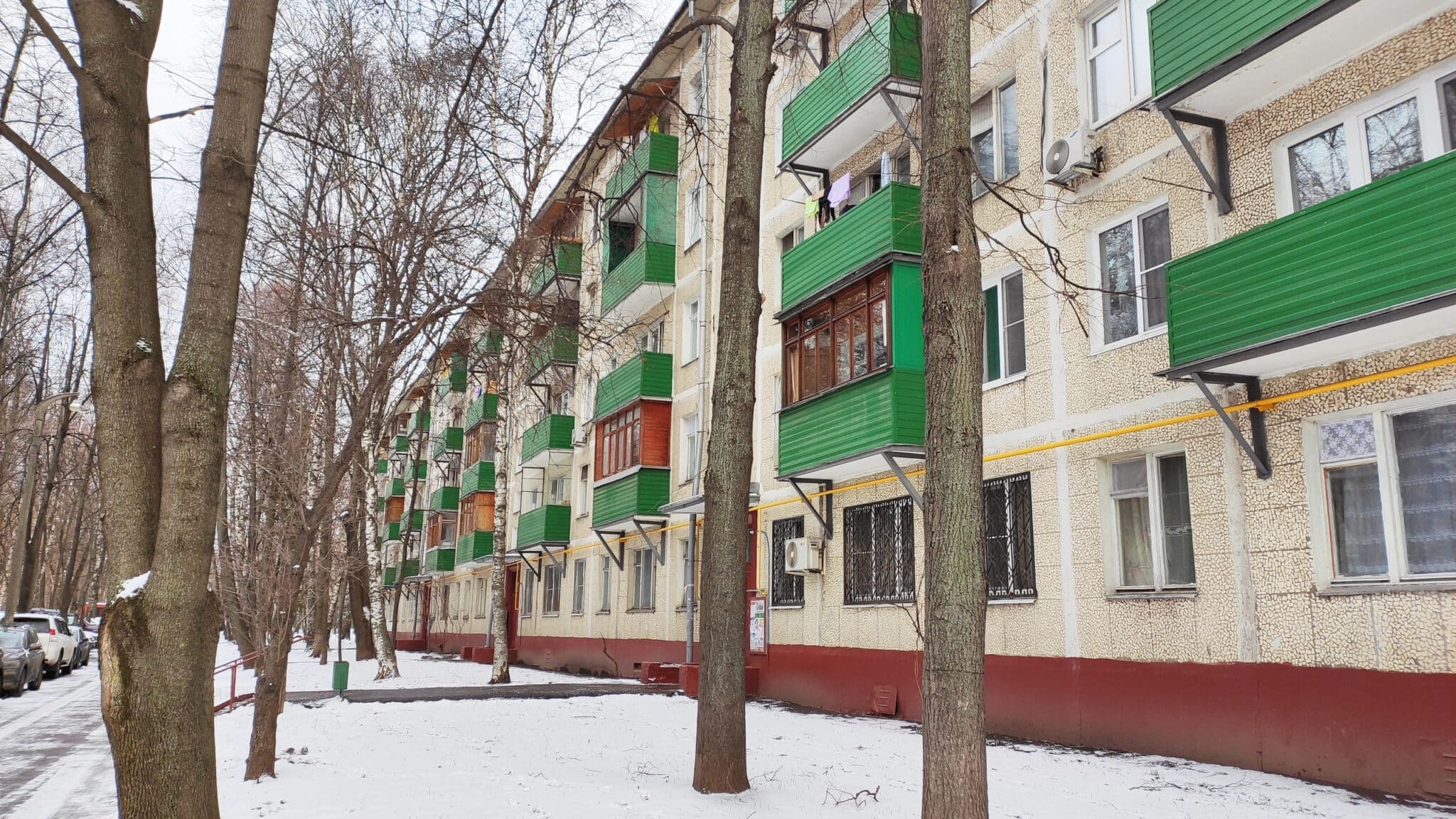
Renting in Russia: Language, Legalities, and Culture
The word for “landlord” in Russian is actually the same as the word for “host” – . Renting in Russia, whether apartments or rooms, comes…
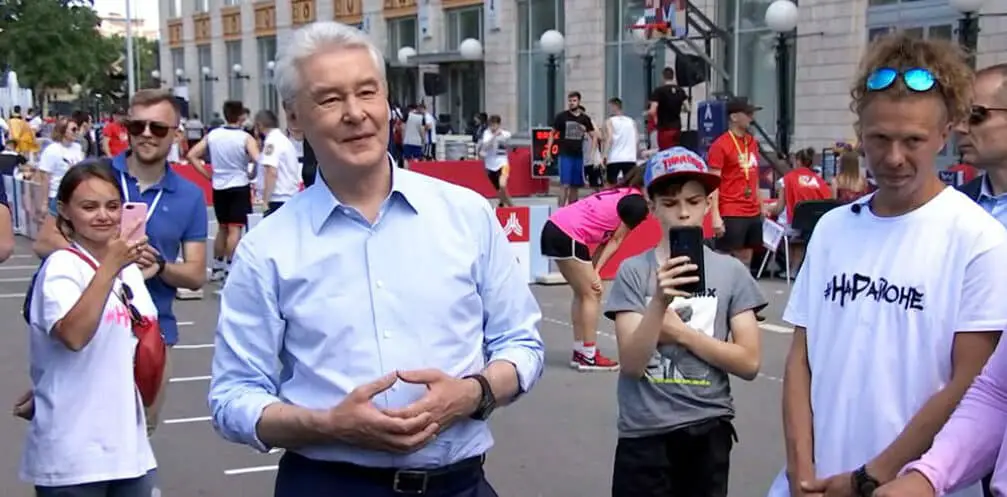
Moscow’s Reopening and COVID Response: A View from the Ground
As of Tuesday, June 23rd, after nearly three months of quarantine measures, Moscow has reopened. The city was able to mobilize phenomenal resources and put…
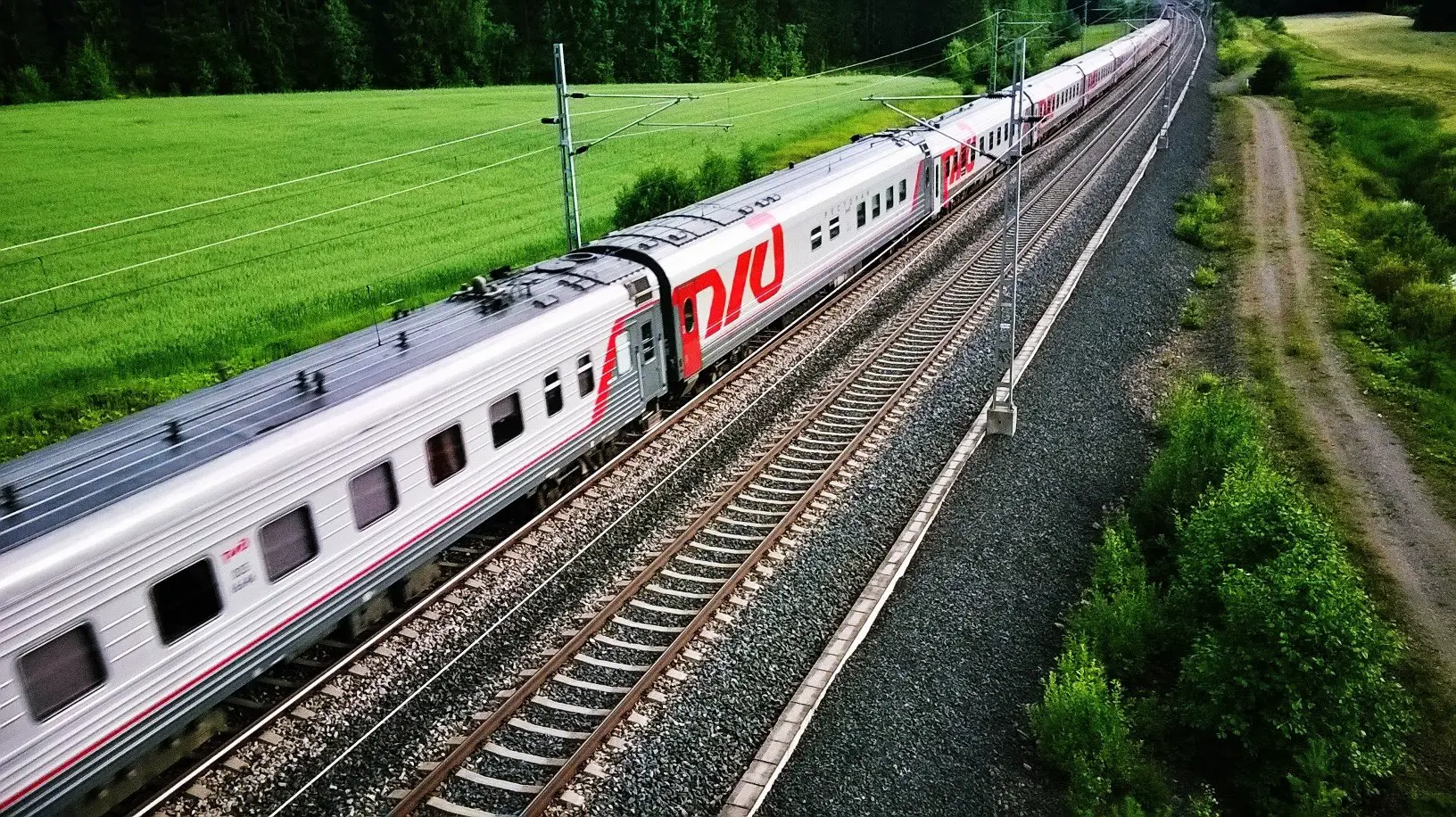
Russian Roads and Rails
Transportation infrastructure is crucial to the economy of any country. At its most elemental level, an economy is a network of goods and services moving…



